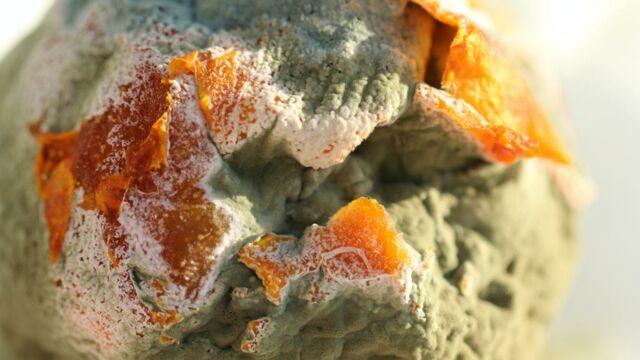Food Shortages: These are the mouldy foods you can eat

Which mouldy foods can still be eaten and which ones should you definitely chuck away?
With the current food shortage that is plaguing the UK at the moment, we thought now would be a good time to look into what foods remain edible despite a less than appetizing appearance.
Discover our latest podcast
Not all mould is bad
Though mould is no laughing matter, as it can be hazardous for our health if ingested, there are still some foods that you can consume while others you should absolutely avoid.
More under this adMore under this adAs a general rule of thumb, if the food in question is covered in a large mouldy and slimy patch, you should probably dispose of it as it most likely contains toxic bacterial growth. Food safety consultant Jill Taylor explains that:
Some mould growths, such as those used in cheese and meat production, add flavour and character to our food, while others are toxic.More under this adMore under this ad
There is no easy way to tell if mouldy food can be saved but I would say one rule of thumb is to look if it has a best before date or a use by date. The Best Before date is about quality, not safety, which means it is highly unlikely that product would become unsafe to eat
And added:
The Use By date, on more perishable food such as soft cheese, cold meats etc, is to protect you from bacteria that would make you ill and could be potentially fatal. I would not recommend anybody eats anything mouldy unless it’s meant to be mouldy. If it has a Use By date, don’t mess with it.More under this adMore under this ad
Fresh produce
So now that we understand the difference between the best before date and the use by date we can get to filtering through which foods can be eaten and which ones to dispose at the appearance of mould.
When it comes to fresh produce, root vegetables and most fruits are very high in acid, which makes it hard for bacteria to penetrate beyond the surface. What we advise is for you to cut around the mouldy parts and eat the rest. If one half of the apple looks like it's had better days, then dispose of it, but feel free to have the part of the fruit that has remained intact.
More under this adMore under this adThe only thing you should immediately chuck away is green potatoes as this is a sign of solanine—a poison that will make you unwell if eaten.
Meats and cheeses
As you probably know, mould and bacteria is essential in the production of certain types of cheeses such as blue cheese, Camembert and Brie. However, other types of cheese should not have such traces of mould. Case in point, cheddar and Parmesan. But if it does happen, you can simply remove the parts that are mouldy and consume the rest.
More under this adMore under this adSimilarly, preserved meats such as salami require mould and bacteria as part of the curing process. Depending on the type of meat, Taylor says:
Unless it’s a pre-served cold meat such as salami, I wouldn’t advise eating it past its Best Before date. For normal cold meats, such as a cooked ham, chicken or cold roast beef, if there’s any sign of mould, chuck them in the bin.More under this ad